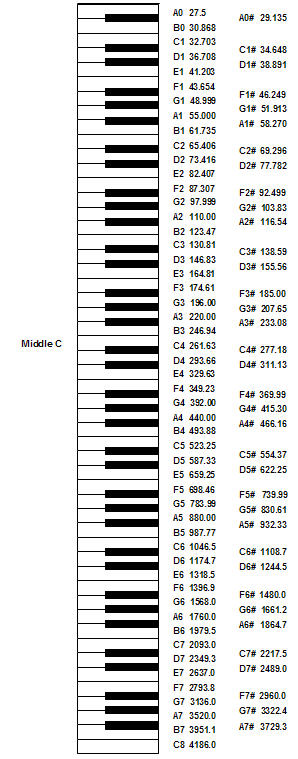 M22 crossover setting
|
Joined: Jun 2005
Posts: 1
newbie
|
OP

newbie
Joined: Jun 2005
Posts: 1 |
m22 owners what do you have your crossover set at?
|
|
|
 Re: M22 crossover setting
|
Joined: Jan 2004
Posts: 3,016
connoisseur
|

connoisseur
Joined: Jan 2004
Posts: 3,016 |
i have M60's, but i think 80Hz is a standard starting point, regardless of what speakers you have.
some people like it at 60Hz, others at 100Hz. adjust it as you feel the need.
bigjohn
EXCUSE ME, ARE YOU THE SINGING BUSH??
|
|
|
 Re: M22 crossover setting
|
Joined: Dec 2003
Posts: 6,331
axiomite
|

axiomite
Joined: Dec 2003
Posts: 6,331 |
OK. LKings's question is a great opportunity for me to ask the technically oriented among us a question I've been pondering for some time. The answer to mine should also answer LKing's.
The M22s are rated to 60Hz, +/- 3 dB, and to 50 Hz, +3 dB/-9 dB. That means there can be as much as a 12 dB drop off in roughly one third of an octave,or roughly from a B to an A Flat. that means a slope of between 27 and 36 dB per octave.
If one sets the crossover in a receiver to 60Hz, there is a slope (usually 6 dB/octave; 12 dB/octave; 18 dB/octave, depending) which begins at 60 Hz. If I understand things correctly, none of those slopes are as preciptious as the natural drop off of the speaker itself.
How, if in any way, would the slope of the speaker's drop off, and the slope of the receiver's crossover interfere with, or compliment, each other? Would it be superior to crossover in the receiver at 80 Hz so the slope of the receiver's crossover does the work?

Jack
"People generally quarrel because they cannot argue." - G. K. Chesterton
|
|
|
 Re: M22 crossover setting
|
Joined: Apr 2003
Posts: 16,441
shareholder in the making
|

shareholder in the making
Joined: Apr 2003
Posts: 16,441 |
Jack, interesting question. Remember that the speaker's natural dropoff measurement is taken with a constant signal level. When you set the receiver's crossover point, the signal going to the speaker below that point is reduced by X dB/octave. So if your crossover point is at or near the point where the speaker naturally drops off, the cumulative effect results in an even steeper slope.
Now to specifically answer the original poster's question. I am an M22 owner and also have an SVS PB12-ISD subwoofer. I cross my speakers over at 80Hz. I've tried running them freely, without a crossover, and setting my sub's crossover to blend in at 60Hz anbd below, but the sub does a much better job of providing the "oomph" that is often found in 60 - 80Hz range. The M22s excel in midrange and treble, so I prefer to let them concentrate on what they do best. I leave them crossed at 80Hz and have never looked back.
|
|
|
 Re: M22 crossover setting
|
Joined: Aug 2004
Posts: 6,379 Likes: 7
axiomite
|

axiomite
Joined: Aug 2004
Posts: 6,379 Likes: 7 |
>>none of those slopes are as preciptious as the natural drop off of the speaker itself.
I think receiver crossovers are normally 24db/octave
M60ti, VP180, QS8, M2ti, EP500, PC-Plus 20-39
M5HP, M40ti, Sierra-1
LFR1100 active, ADA1500-4 and -8
|
|
|
 Re: M22 crossover setting
|
Joined: May 2002
Posts: 10,654
shareholder in the making
|

shareholder in the making
Joined: May 2002
Posts: 10,654 |
Jack, I don't think that we can really figure the M22 slope to be that steep from those numbers. First, they're under anechoic conditions which don't take into account room reinforcement. For example, my M22 placement results in essentially flat response at 60Hz, slight drop at 50Hz and much weaker, although still usable, response at 40Hz(essentially nothing in the low 30s). The anechoic +/- 3dB would imply a 6dB drop from a high point at 60Hz and the +3/-9 would imply a 12dB drop at 50Hz, so 6dB farther down than at 60Hz.
The THX ideal is to use a speaker with a "natural" 12dB octave slope below 80Hz. The crossover, which is supposed to be 12dB/octave high-pass, would then result in a 24db/octave mains rolloff and the low-pass crossover to the sub, which is supposed to be 24db/octave, would then theoretically result in a matching 24dB/octave slope for the sub.
-----------------------------------
Enjoy the music, not the equipment.
|
|
|
|
Forums16
Topics24,945
Posts442,477
Members15,617
| |
Most Online2,082
Jan 22nd, 2020
|
|
|
0 members (),
896
guests, and
3
robots. |
|
Key:
Admin,
Global Mod,
Mod
|
|
|
|



